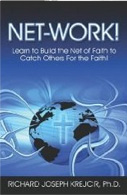Daniel and Revelation are not Puzzles!
In Matthew 24, when Jesus tells us about the last days, He is as clear as can be! So, what is the problem? Why do so many people get Revelation wrong or have crazy ideas or contradictory theories? Basically, it is because (to say this bluntly), they have not read it! It amazes me how some pastors and Bible teachers can go to a text and not "read it," but can be really good at "reading into it." That is, instead of reading what is there, in its context, what the words say in the original languages and culture, we read in our theological ideas, frameworks, and presumptions, and thus totality miss what God is actually saying to us! The other problem is the type of literature in which Revelation is written; many of us just do not understand its type because it is alien to our language, training, and culture; thus, we ignore it or misuse it or look at it as something else. Apocalyptic genre (literature) has a clear meaning most of the time, when we realize what it is and how it operates.
We need to read the Bible so it is more impacting to us and so we can draw out more information for personal edification and teaching. We need to use the proper rules of interpretation so we stay focused and not read into it what we want. Such rules include context, syntax, word meanings, and grammar; this applies to any type of literature from a textbook, from Shakespeare, to poetry, to a novel. Words are used as communication and expression tools to convey the thoughts and principles of the author; and, in the case of the Bible, what God is saying to us. Thus, we need to know the "terms" (its various meanings as applied to its context) and "audience" (how is it used in the culture and how its readers would see it) of the word to get the most out of it. This includes the form of the word, such as how it is put together in sentence structure and context, and what the "function" of the word is, such as its grammar of voice, mood, person, number, noun, adjective, and so forth. Each of the genres operates a little differently in the form and function of the words. (See our article on the Genres)
What is Apocalyptic Literature?
Apocalyptic, as a term in the common vernacular or dictionary definition, means something that is written in an ominous, threatening way. It is scary, thwarting, and about boding evil. The dictionary tells us it is presaging people of imminent disaster, exaggerated predictions, or allusions of the Last Days. However, this is not what it meant in the original Greek or Hebrew or in the time this term was penned. What did it mean? It means "discourser of events," and that is what it literally and truly means to us today, too. It also means an "uncovering" or "unveiling," and "Revelation" means "discourser of the apocalypse." Apocalyptic is not meant to scare us or keep us away from interpreting Scripture; rather, it is meant to help us understand God, victory, hope, grace, God's plan, and that He is indeed in control. The only people who should be scared are those who reject and hate Christ. When we see how this literature operates, it will help us greatly as it discloses for us the unfolding of historical events¾past, present, and future, with God's plan and purpose being the ultimate goal. Thus, if we take the time and effort to understand this type of genre, it will make things clearer for us-it will expose, not conceal what God has for us.
We need to realize that all languages use symbols and metaphors including Greek and Hebrew, and thus, the Bible. If we assume a word is literal when it is not, we will make an erroneous conclusion that will lead us and others away from the correct precept. Then, if we teach it, we lead others astray from the correct teaching all because of our pride or ignorance of not correctly interpreting Scripture or reading the Bible for all that it is worth. For example, a parable should not be treated as history, nor should poetry (both of which contain many symbols) be treated as straightforward narrative; the same goes for apocalyptic literature.
Most of the apocalyptic literature in Daniel and Revelation came to the writer as inspired by the Holy Spirit in visions. These are visions that came to them from God and/or an Angel, with imageries that need to be put into human based words, but no words have the power or substance to contain the meaning. Hence, a metaphor is used, as it is able to contain far more information about the "secrets" of Heaven and End Times than what a few sentences could. These images are usually explained and known to the writer and audience, but not so much to us today (Dan. 7-12; Rev. 4:9).
.
How does Apocalyptic Literature Work?
Apocalyptic literature is written in symbolism, poetry, and imageries, as well as in an Old Testament prophecy style (Matt. 24-25; Mark 13; Luke 21; Rev. 1:2-4; 19:9; 22:7-19), all woven as a tapestry to describe literal events but with a twist, using language with symbols that are cataclysmic, words that are exaggerated, and metaphors that may be lost to a 21st century person. Such imagery is often used for God's judgments and the end of days. These forms of language (genre) are often combinations of narrative (story form) and prose (poetic) written in vivid imagery and rhythmical phrases that are intended to express a deeper but not necessarily a hidden meaning that a "regular" word would not convey. Take our English word, "bull." It normally means a male cow, but in context, it refers to not just a farm animal, but also could mean someone who is aggressive, an upswing in the stock market, someone who is clumsy, or slang for someone who is telling a lie. This simple word can be exaggerated for a purpose just as Daniel and most of Revelation uses language to express a point. Apocalyptic writing is also found in Isaiah, Ezekiel, Zechariah, and Matthew 24.
Apocalyptic literature is a combination of narrative and prose written in vivid imagery and poetic phrases that are intended to exaggerate for a purpose, such as in Daniel and most of Revelation. Apocalyptic writing is a more specific form of prophecy. Apocalyptic writing is a type of literature that warns us of future events, but the full meaning is hidden to us for the time being. Apocalyptic writing is almost a "secret," giving us glimpses of what is to come through the use of symbols and imagery. We may not know the meanings now, but time will flush them out.
Metaphors are very evident in apocalyptic writing, which is also more than a specific form of prophecy. Apocalyptic writing is a type of literature that uses vivid symbolism at the same time, it encourages and reassures the reader that God is in control and they do not need to fear as long as they fear Him. Apocalyptic writing is almost a "secret," giving us glimpses of what is to come through the use of symbols and imagery. It is secret only because when we read it in English (or any language that is not 1st century Greek) nearly 2,000 years later, we do not understand it. Will someone 2,000 years from now realize that a "bull market" does not mean that a farmer's truck broke down and a cow got loose in a store? Or, when Jesus says He is the bread of life (John
Some Apocalyptic Examples
Revelation uses a lot of metaphors that tend to be "filling" to sensationalists who refuse to look them up; they would rather read in their skewed ideas. What we need to know is that symbols in Revelation had specific meanings for a first-century Jew or Greek, like when we might say "it is raining cat and dogs." This does not mean to be careful not to step on a poodle. These are metaphors; they are not to be taken literally but at the same time, they are not to be taken lightly. They should be taken as they meant then, not compared to a modern day newspaper. John was in a totalitarian, evil regime under Emperor Nero who was very much an antichrist, as in one who opposes Christ-not just one person but anyone who oppresses someone away from Him (1 John 2:18, 22; 4:3; 2 John 1:7). Thus, when he uses 666 or beast in Revelation, it can also refer to Nero and/or someone like a Hitler, a Mussolini, a Saddam Hussein, or someone who is yet to come; more probably, all of the above. The symbol, 666, was typical of first century Jewish apocalyptic riddles that were usually known to the audience to whom they were written; John's readers knew who he was talking about. It was not a secret code to the hearers, only to those outside of the Church such as Roman officials who would take away their property, jobs, and even their lives for uttering blasphemy to Caesar or
Another example in Revelation is that John also uses the language of the current Greco-Roman figures of speech which contain the succession of visions of spiritual warfare, warnings, and judgments, climaxing with the Second Coming of Christ, and finally a farewell. Yet, the figurative speech and images, although borrowed from the Old Testament, would have been clear to an educated first-century Jew. It may not be a style we are familiar with in our contemporary culture, but it was very popular from 200 BC to 200 AD. Consider that describing our modern life with cars, freeways, electronics, and computers to a first-century person would be unrecognizable and incomprehensible imageries. What we take for granted, considering what we know and what they knew, does not measure up in the understanding of one another. Revelation and its imagery were real and had application for them as they are real and have application for us, too. Much of the imagery was used to get a response from his readers, to evoke them from complacency to spiritual activity.
These images can be literal events as well as symbols. They can apply to the
Much of what is spoken of in the Old Testament for
Revelation brings a lot of controversy because it is interpreted so varyingly. We need to come to apocalyptic language without a specific view or we will become construed and constrained to it and miss what God has for us. Each prophecy and image can have multiple meanings and multiple fulfillments. Each view has some ideas that are correct and some that are wrong; none of them are all wrong or all correct. Most of the Bible is very precise, but apocalyptic literature is difficult because God has not given us the final key. In addition, apocalyptic language is about relationships and events in an Oriental logic form that does not have Western philosophical chronology in mind. Hebrew logic is based on "and" and "or," whereas western logic is "if than" or "either or;" very different. Therefore, we must beware not to read into it our current idealistic methodologies and theological frameworks. Rather, we are to focus on real, authentic, Christian faith and allow God to provide us a framework from His principles. Revelation also borrows heavily from Isaiah, Jeremiah, Ezekiel, and the Psalms as well as apocryphal literature such as 1 Enoch. Revelation is more about who opposes Christ and His principles and who is faithful and fruitful.
Interpreting Apocalyptic Literature
We have to be careful how we interpret the Bible. Most of the time, we are to take His Word literally; it means what it means and says what it says. However, in "apocalyptic" literature or genre, the language is clear, such as the word, "lamb," which is used often. We know what a lamb is and we may know that Christ is described as a lamb, but do we also know that Jesus is the Lamb… been slain which means that Christ is the sacrifice? A lamb is the common animal that was "slain" and sacrificed for the atonement of sin and used for commerce. Jesus replaces this lamb as the ultimate sacrifice-the sacrifice for our redemption. When you see the word, Lamb, it is most likely referring to sacrifice and our Lord who offers us salvation (John 1:29; 1 Pet. 1:18-20). In contrast to the image of a lion which means Sovereign and Judge, the lamb was considered the weakest of all animals, needing constant attention and care just to survive. A lamb would die in the wild, whereas the lion would thrive. The image of the lamb was common in apocalyptic literature, also meaning victory and power through, and sometimes over death (Ex.
When we come to words that seem peculiar to our modern minds, such as "stars," the first-century Jews would know that it meant "angels." Lampstands meant "churches;" the phrase, "wife of the Lamb" meant "
Another apocalyptic word is star. A star in ancient cultures was a colloquialism for divinities or angels; context is the key. Is it talking about messengers, things to come, or stellar events such as astrology? If it is a message being delivered, it could refer to a mighty angel, or refer to a cosmic disturbance, an Angel or servant, or an instrument of God (Rev. 8:10; 9:1-11; 20:1). Context and commonsense are the keys. These images are "metaphoric," or symbols of specific themes in judgment. The obvious is that the actuality of this passage is pointing to God's power, but these events are not necessarily verbatim, as it would be seemingly impossible. How could one star, much less billions upon billions land on this plant that is a billion times a billion smaller? The answer is, it is figurative, and it is a mystery how this will be eventually played out and what we will see. This is a depiction, just as a first century Jew would read and write. What we do know is that it will not be the same! The point of this metaphor is that no one is immune from experiencing God's judgment. The entirety of the universe will bear witness to God's will as an incredible phenomenon, displayed in the cosmos, that will herald Christ's Second Coming (Mark 13:24-26; Luke 2:25-27).
The Popular Apocalyptic Images
The Beast!
The first thing that comes to mind that people love to speculate about is the beast, which was a maxim, meaning a persecuting power and/or a people who are demonic and evil. The beast in the original Greek refers to a "bestial" man, one who is brutal, savage, and ferocious. In context, this infers that the sea is a dwelling place for monsters, suggesting terrifying, repulsive, and evil things that seek to lead the world and the Church astray. This passage also gives comfort and hope because it depicts how God is still in control-even over the beast, and even in times of insurmountable chaos and suffering (Job 7:12; 41:1; Psalm 74:13; 89:9-10; Is. 27:1). Whenever the "beast" makes his "appearance," it may not be the same person all of the time such as the antichrist; rather, it is a metaphor or a theme of intent rather than a specific personality. At this place in Revelation, the beast denotes someone of power and influence who is doing the persecuting (Psalm 87:4; 89:10; Is. 51:9; Dan. 7:3-8, 16-25). Thus, any dictator, or gossiper for that matter (Rom. 1), can be a beast. Some say this indicates that the antichrist will take over the
This term, the beast, from a literary, historical, or theological perspective does not denote a singular person being an antichrist, although the theme as John uses in First John does apply as opposing Christ. These two metaphors, beast and sea put together in Revelation 13 in this literature type, refers to the tenacity, fierceness, and repulsiveness of this beast, which is evil and has evil motives. In John's time, this also represented the Romans or any secular, pagan authority because
Thus the term beast has more to do with who are the beasts in your life? Once in a sermon, Augustine asked his people if any of them were antichrist, as in opposing Christ in character or unfaithfulness. The First John definition of antichrist, the only place in Scripture this term appears, simply means anyone who opposes Christ. It isn't about an ominous, opposing personality rising up and tricking us; rather, it is about our willingness to be tricked. God gives us a mind and the incredible resources of His Spirit and Word; we have no excuse to be disloyal to our Lord. The call here is to heed the warning, not engage in vain speculation; rather, we are to make sure we are lined up to Him, loyal to our LORD! This means that as we lead our lives and run our churches, we have to seek Him and ask, are we being disloyal to our Lord? If so, guess what? The antichrist is not a political figure; it is us…you! We are the ones who are opposing Christ! This aspect is far more important that the speculations, because it all comes down to one thing, loyalty. Are you devoted to Christ or a slave to your will and to the manipulations of others?
666!
Another popular image is six hundred and sixty-six (666). This was a symbol typical of first-century Jewish apocalyptic riddles usually known to the audience for which it was written; John's readers knew who he was talking about. It perhaps referred to Nero, and thus was a warning about making loyalty-oaths to Caesar. It was not a secret code to the hearers, only to those outside of the Church such as Roman officials. This was also a common way to express or warn about godlessness or those opposing Christ (could be attributed to a specific person such as Nero, or to any person in opposition to right and God) while avoiding unnecessary reprisals. Some commentators have said this is "the trinity of evil", referring to the number of the antichrist who seeks to combat God and His people. This is called, in the Greek, a "triangular number;" it is used as a parody or a word play in the first century, referring to someone or something else. It was also a cryptic code word that referred to Nero, using the Hebrew translation of the Greek numerical values. This type of code is called "gamatria" where each of the letters in the Greek or Hebrew has an equivalent numerical value, such as alpha, which stands for one. This was not secret but common Jewish thinking; Jesus, in the Greek (IhsouV), has a numerical correspondent to 888. Some early Christian thinkers, such as Irenaeus, have attributed this to Euanthas or Lateinos or Teitan; Martin Luther thought it might refer to a Pope Benedict, and/or to other various evil Popes. In addition, 666, as a number, is diametrically opposed to the perfection of the number seven which means fullness and completeness.
Thus, the theory of the numerical value is that a future antichrist may have a name equal in numerical value to 666 when it is written in Greek. "Nero Caesar" is 666 in the Greek when transliterated from the Hebrew (Matt. 24:15, 36-51). There is no reason or call to seek to decode this; it is not about the world's population hitting 6,666,666,666 that may have happened in Nov 2006, or some mathematicians' theory or whatever the theory of the day is. Thus, this term 666 could be attributed to a specific person such as Nero, or to any person who is in opposition to righteous and God. In this way a first century Christian can avoid unnecessary reprisals. The various theories of 666 do not always take into account what it meant then, which is crucial for our understanding and application of His Word. For example, the numerical value as that of a future antichrist may not be accurate, because it is also the name for "Nero Caesar" when it is written in Greek, transliterated from the Hebrew (Matt. 24:15, 36-51). Sometimes the plain meaning is far more important to us than what speculators have come up with. We are to be watchful to those who oppose Christ and make sure we are not opposing Christ in thought, word, or deed, taking oaths, or making promises that counter Christ's principals!
The Mark!
Another popular apocalyptic symbol is the mark. Mark basically means ownership and control; in its context, it also refers to a forgery of the seal and love of God given to Christians (Ezek. 9:4-6; Rev. 7:2-8; 14:1; Rev. 13-14). This "mark of the beast" is about who controls us-Satan or God. This beast forces people to bear the mark as a way to control and also as a counterfeit to the Holy Spirit that "marks" a true believer. In addition, this is also a pattern of the stranglehold that has been repeated throughout human history, such as the trade guilds that controlled who could buy or sell in the midst of the church at Thyatira (found in Revelation 2:18-29.) Also, it is the corruption as exhibited in John's time by both Jewish and pagan priests, and especially the emperor cults. Additionally, it is also represented in countries that are run with totalitarian tactics by corrupt officials and/or dictators. There are countless speculations on this, but it really denotes, from the word meaning and the context, that it is a metaphor for ownership and control, but the means by which this will occur is unknown. All we can do is see how this has played out before and be ready for the future. Fear mongering over technologies and personalities are beside the point; neither Satan nor God need technology to make this happen, because it has happened before in grand scale without it. However, since we do have it… (Eph.1:13; Rev. 14:9-11; 15:2; 16:2;
The Dragon!
And of course, there is the dragon or Red dragon…. The term "dragon" literally means "serpent" or "sea monster" such as the leviathan, and for the Jews, it symbolized monstrous evil (common in Canaanite and Mesopotamian myths), and Heracles and his battle with the hydra. A dragon is also a description of Satan who is the enemy of God, who is a terrifying and destructive beast, and who seeks the total devastation of God's people. This image is not meant to terrify us, but to show us how he and evil work together so we can beware and defend. This was also a metaphor for
Many times, the metaphors are directly from the Old Testament, as Scripture interprets Scripture. For example, the Sea turned into blood. This term is indicative to the first plague in
Apocalyptic writing can also be cryptic as representing something else and symbolic such as "IXIOUS," the "fish" which was a secret greeting in the early Church, which was under persecution from Jewish leadership, Rome, family clans, and peer pressure. Thus, this was a greeting (not in Scripture) to see if another person was a Christian, too. IXIOUS was an acronym and is not directly in Scripture in this form, but the meaning and the words spelling the acronym are. In the early church Christians evading persecution would write out the Greek word for fish, "IXIOUS", or the symbol <>< which stood for Jesus, Christ, God, Son, and Savior. This acronym stood for who Jesus was-the Savior; not a man or a half-god/man hybrid like Hercules, but the Mighty One of the Universe, humanity's God and Savior (just as the name Jesus meant).
Apocalyptic Literature is Not a Secret Code?
Remember, the Apostles and most of the early Christians were fluent in Greek as well as Aramaic and some Hebrew; they fully knew the Old Testament and were immersed in that culture. Paul, John, and others used a good amount of borrowed material for illustration sake, which they knew but that we may not know so well. Consequently, the inscription key is the understanding of the Old Testament and Jewish customs and thought, not today's newspaper headlines! So, you use a concordance and look up that word, such as lampstand, and see what it meant in Exodus and then in Zechariah, and you have your key to unlock the "code" of the word. Remember, the Bible interprets itself, too. For more in-depth research, you can do what we do at Into Thy Word; we use the Old Testament first and foremost and then look in the other first century literature that John and his reader would be very aware of and have borrowed from, such as the other apocryphal Jewish Books. But, keep in mind that these are hints and helps that give us insights to this type of genre and metaphors and their usage to a first-century Jewish understanding, but are not recognized or inspired as Scripture! These works include the apocalyptic books, 4 Ezra, 1 Enoch, 2 Esdras, Profetes, Sibylline Oracles, Petronius, 4 Maccabees, Joseph and Asenath, Jubilees, Simititudes of Enoch, and the Qumran Texts, to name the main ones (there are many more). They are available on CD and online that makes searching them easy (www.ccel.org).
We also need to keep in mind that many of these images are metaphors with meanings that a first century Jew or Greek would clearly have known and understood; we today, two thousand years hence, may not. In conjunction we need to seek the context and word meanings of the passage and image in question, and seek what they meant to the people at the time as well as comparing it to other passages. Thus, we look to the underlying meanings in the Greek, and study Jewish apocalyptic literature and the Old Testament. Our big clue is the Old Testament where most of it resides, but not just in Daniel. What we do not do is seek what they mean two thousand years later in someone's fantasy or speculations. For example, in Revelation chapter seven, the 144,000, the context and word meanings tell us that there is no ethnicity, as all in Him are His, and the numbers are beyond measure. The O.T is our code breaker and will help us unveil the clues. God's Word clearly tells us what the meanings are. It is not today's newspapers and popular trends that give us the meanings; it is the understanding of God's Word and the context that does.
Images such as the beast, the mark, or 666 are not to be taken literally; rather, they are symbolic depictions of dire warnings meant to strike terror. These were most terrifying images to an ancient person. They are meant to be a wake-up call to heed the Lord, Sovereign of the universe, and get our lives lined up to His, or else. And, the or else is that you will be judged, not just in eternity, but in this life, too. What does it take to get you lined up to His precepts and yielded to His Lordship? God wants us to make a real, passionate effort to repent, get right with Him, and not lead misguided and harmful lives by trying to serve other things, idols, desires, or trying to choose between two contradictory paths in life (Prov. 24:3-4; Is. 45:7; Jer. 29:11-14; Phil. 2:3-4; James 1:6-8; 4:7-10). God is far more concerned about how we lead our Christian lives, knowing Him, and making Him known than replacing or covering our speculations over our faith.
Let us not get caught up and stuck in meaningless speculations; rather, do as the passages tell us. Be caught up in Christ by your faith. Good exegesis means God has control of what He says; we do not. We are to dig out His precepts, not interject ours. We are to accept what it actually means for us, not what we want it to mean.
More In-depth Information
When we come to an apocalyptic word or book, we need to realize it is not esoteric (meaningless or obscure or too deep and hidden); it also has a meaning for us today, as it contains past, present, and future events. Examples include the many prophecies concerning Jesus in Matthew 24 most likely already have been fulfilled, and there are parts of Daniel and Revelation that will yet come to pass. Prophecy does not always follow a clear, logical, systematic pattern; rather, it often jumps from thought to idea to another point and so forth. It also may jump over large periods of time. Thus, in prophecy, we need to be aware of two essential forms of language.
First there is the Literal (Didactic). This is the simple and direct meaning, or in other words, what it says is what it means. It has a plain meaning. Zechariah, chapter seven is a good example, as are much of Isaiah and Jeremiah. The imagery had a clear meaning to the people to whom it was first presented, so don't jump to conclusions or read in what is not there. If you get frustrated with it, put it aside. Most Bible scholars debate the meaning, so it is improbable that you will have a clear insight. Some people are not ready or able to comprehend this part of the Bible; if so, that is OK! Focus on the parts of Revelation that are crystal clear.
The second form of language is the Figurative (Predictive). This is the category into which most of prophecy and thus, Revelation falls. We are to always view prophesy with the attitude that it has a plain meaning until we have clear and compelling reasons to place it in the figurative category. Our task is to determine the points and ideas that apply today and point to tomorrow. The bottom line is that it will happen at some point in history, and come to pass in a literal and plain way. We may not understand it until it is right on top of us. Daniel 7-12; Joel 2; Isaiah 11; and Zech. 4 are clear examples of figurative language. Furthermore, some of the language in Revelation is "word pictures" where John is trying to describe in their language and culture as well as technology, such as Daniel, chapter seven, and many parts of Revelation. For example, if he was describing events we might see in our lifetime, how would he describe a helicopter if he had never heard of or seen one? For most parts of Revelation, John was using imagery from Ezekiel, Daniel, and other Jewish literature that they would have known. Unfortunately, there are few of some so called Bible scholars who write the popular books of today who are even aware that there is an Old Testament, let alone how to inductively read it. The key to the understanding of Revelation is in the Old Testament!
Getting the Most Out of Apocalyptic Literature
It is important to note that 28% of the Old Testament is prophecy, most of which came to pass in the life and work of our Lord Jesus Christ. The New Testament has over 20% of some form of prophecy too, of which most (although this is debated) has not yet come to pass. Thus, prophecy is important because God has dedicated a significant portion of His Word to it. Again, do not read in what is not there. We are given a clear warning in Revelation 22:18-19 not to add in our ideas or take a way His precepts and thus teach what is false. It is OK to speculate academically, research, and argue and deliberate over the views, but we are not to seek or read in what we want and then miss what He has. A lot of Christian writers love to embellish on this subject and give their own version of what will happen. But, the scores of books that have been written in the last hundred years have not panned out in their theories. Every prediction made by many melodramatic preachers and writers have not come true because it is "their" theories, not based on fact or careful study of Scripture. The Bible clearly tells us we do not have access to that information; no one will know the time (Matt. 25:13; John 16:4).
When you come to a word in the Bible, it is best to first assume it is literal, unless the context and word cry out, "hey! This may be a metaphor!" Just look it up in a Bible Dictionary, a Bible Background Commentary or language help, or use our website. A metaphor does not mean that the Bible is not literal, as finding the meaning of the word is a literal way to receive God's truth. The bottom line is this; the reason why we do not always take these images literally is for the reason that this is "apocalyptic literature" written in symbolism, poetry and imageries conveying ideas and representations, whereas most of Scripture is narrative and epistles (letters) that we do take as literal; they mean what they mean plainly.
Make sure you are not reading into the Bible what you want it to say; rather, allow His Most precious Word to challenge you to lead a great fruitful Christian life! We can agree to disagree over what is literal and what is figurative, or what view one should take-or take no view at all, as I do. The main point is our love for the Lord and our willingness to learn and apply His precious Truth into our lives and church. He is the One who gives us life, salvation, is in control, has a plan, and will work it out in His perfect time!
© 2007 R. J. Krejcir Ph.D. Into Thy Word Ministries www.intothyword.org













